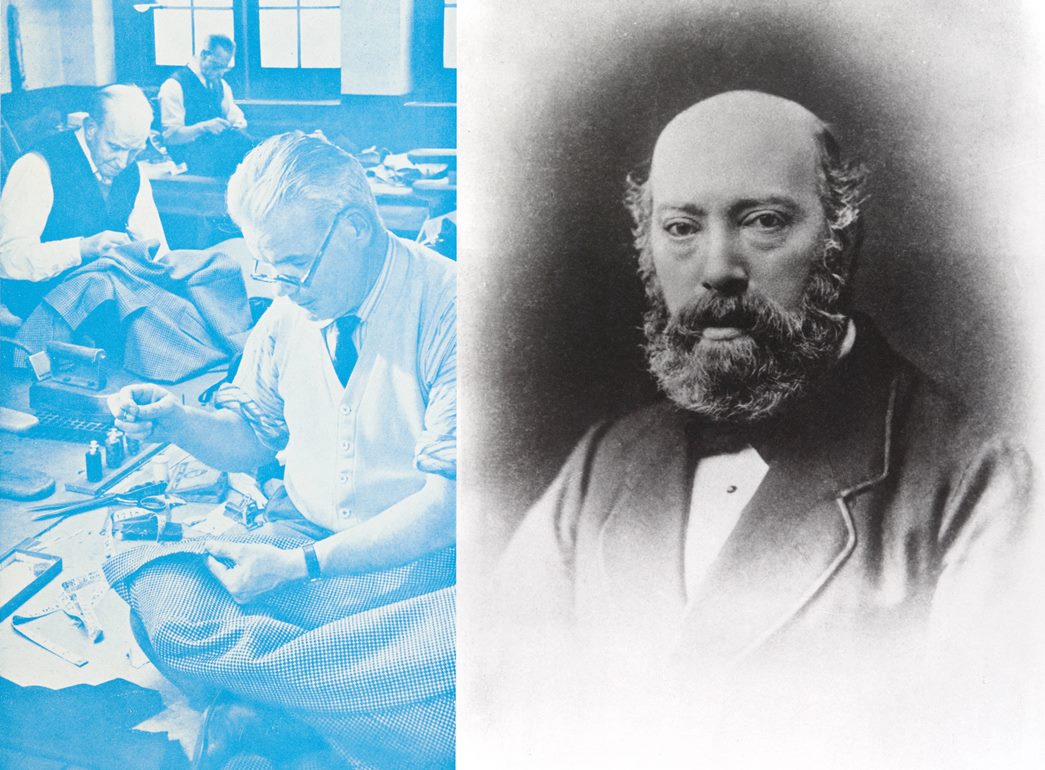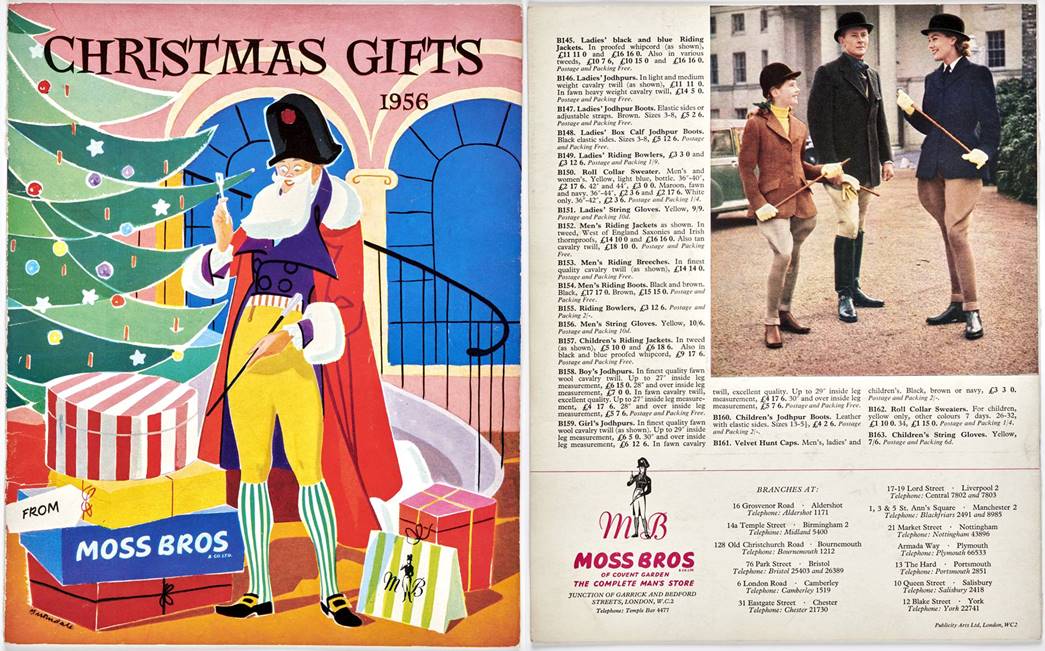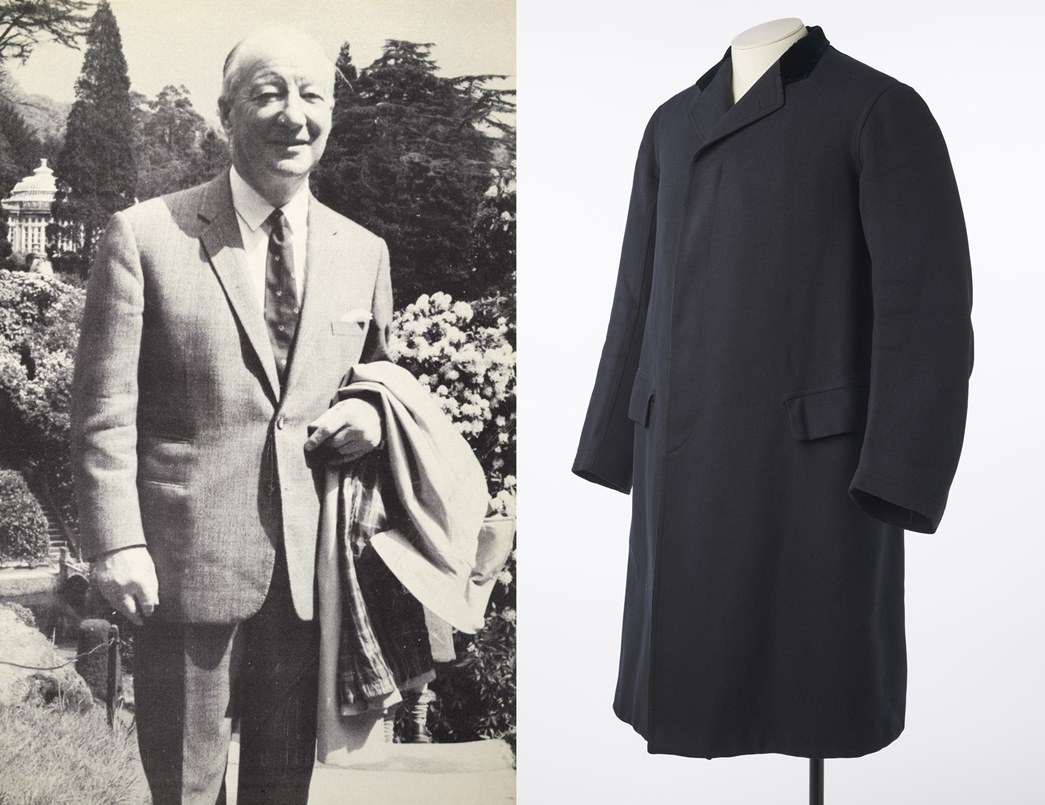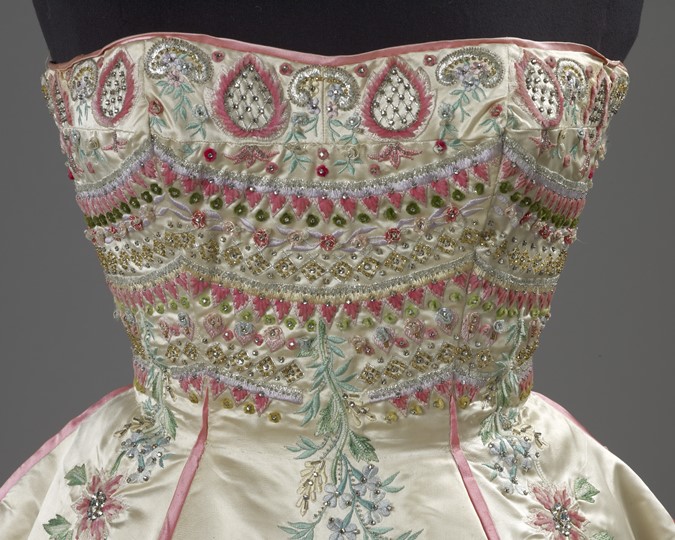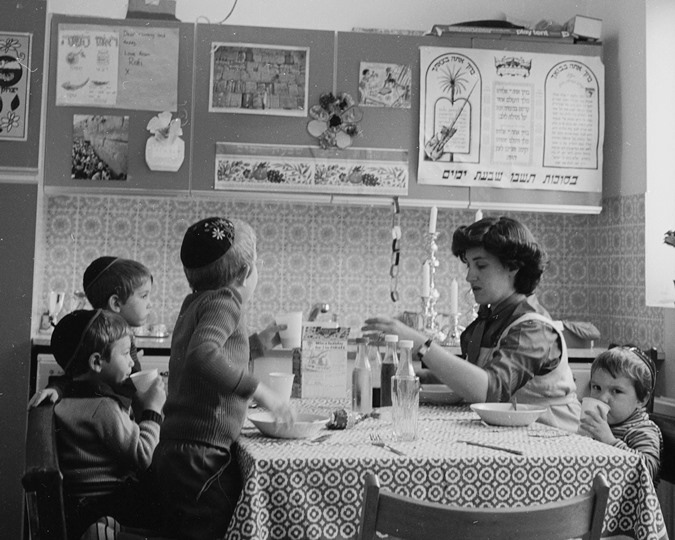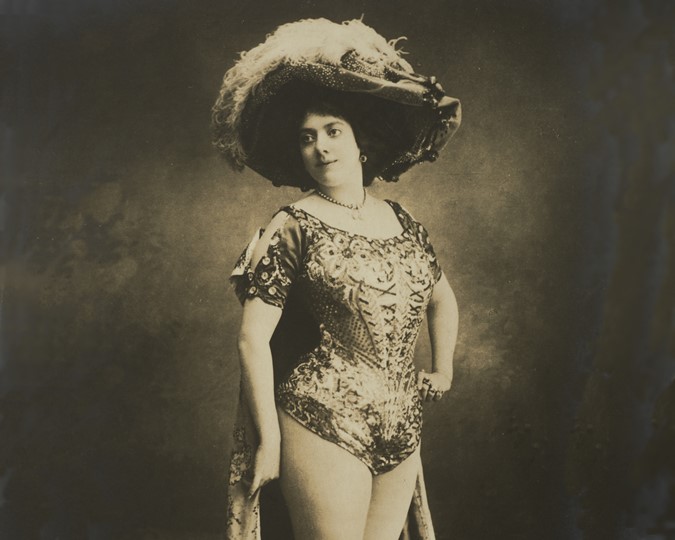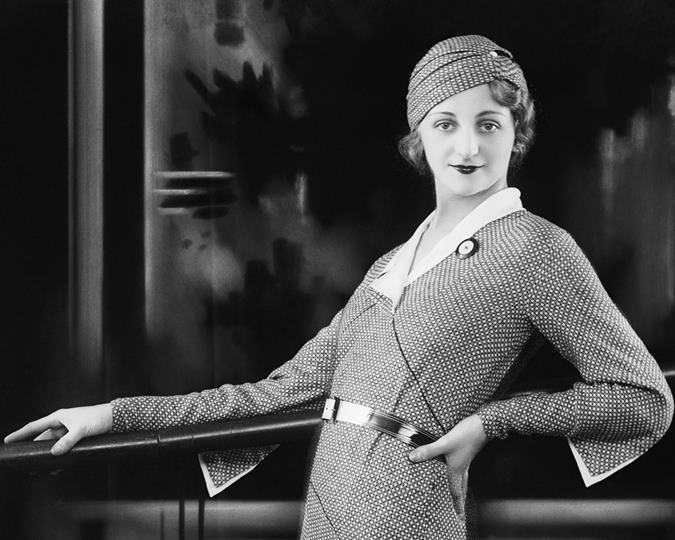Moss Bros, one of the longest-surviving Jewish-founded firms in London fashion, has achieved longevity by embracing change, and staying ahead of the shifts and turns of fashion production and consumption. We trace the history of this iconic London firm through an edited excerpt from the book ‘Fashion City: How Jewish Londoners shaped global style’.
Of all the Jewish firms discussed in this book [Fashion City] only one has borne witness and contributed to the entire history of London’s twentieth century ascent as a global fashion capital – Moss Bros. Having dressed the upper echelons of British society for events such as Ascot, Glyndebourne and the 1953 coronation of Queen Elizabeth II, when at least five cabinet ministers appeared in the firm’s hire robes, Moss Bros has been shaping British fashion for more than 160 years. Famous customers include the composer Edward Elgar, playwright Noël Coward, explorer Fridtjof Nansen and actor Rudolph Valentino, who hired a suit to wear for the London film premier of Blood and Sand in 1922. Moss Bros generously let Valentino off the extra charges that would usually be accrued for damage after he had to escape, over the roof of the cinema, from crowds of adoring fans. For those of us who do not move in such rarefied circles, Moss Bros has also been a staple of the British high street and a familiar presence in our lives and wardrobes.
Moss Bros has achieved longevity by embracing change. The brand survived because successive generations of the Moss family and their collaborators found new ways to stay ahead of the shifts and turns of fashion production and consumption.
How did Moss Bros start?
The story starts with Moses Moses, later known as M. Moss, who was born in 1830 into London’s well-established Anglo-Jewish community. He was educated, serving as a lay reader at his synagogue, and dealt in second-hand clothes…. .Moses was good at his trade and in 1881 he set up a new shop, M. Moss, at 20–1 King Street in the more fashionable area of Covent Garden. In 1894, the business was taken over by two of his sons, Alfred and George, and they changed the name to Moss Bros in 1899. The brothers had complementary talents: Alfred was a strong salesman and George, who was deaf, was a skilled tailor. Although Moss Bros had a healthy second-hand business and excellent networks to facilitate this, as the nineteenth century drew to a close the brothers were aware that times were changing. The growing market for ready-made clothing took trade away from second-hand dealers, so the brothers expanded their business into selling new, ready-made clothes. They distinguished themselves from competitors by focusing on the upper end of the market, selling goods that were a cut above the ready-mades coming from the East End. To do this, they made the most of their geographic proximity to Savile Row. At the end of the London social season, they would buy tailors’ misfits – the unworn orders rejected by customers – and fabric remnants. George would cut suits from these remnants according to patterns based on garments from Savile Row and send the pieces to be made up by the area’s many tailors during their off-season slack period. In addition, the firm also expanded into hire.
In the first decades of the twentieth century, Moss Bros continued to expand by responding with ingenuity to changing national circumstances. The firm anticipated the need for military uniforms during World War I, increasing its estimated value from £10,000 in 1914 to £80,000 in 1919. Then, as the nation struggled with rising prices in the aftermath of the conflict, the firm expanded its formalwear hire business to cater to a growing demand from the cash-strapped middle classes.
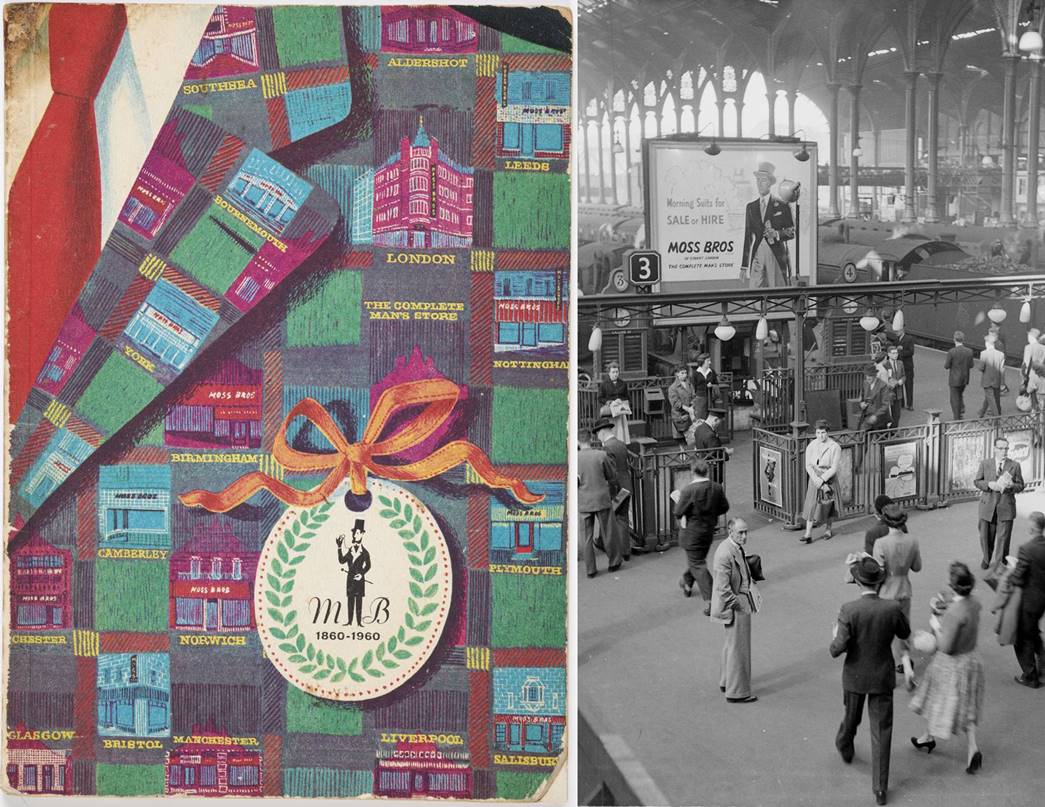
(left) Cover of a commemorative publication marking the 100th anniversary of Moss Bros, 1960; and a Moss Bros advert at Liverpool Street Station, c1960 (ID nos: NN43246; IN38578, ©Estate of Bob Collins)
A new generation of management at Moss Bros
This period of inter-war expansion was overseen by a new generation of the family. Harry Moss joined the business at the age of 13, learning the trade on the shop floor. In 1921, aged 25, he was made director and became fondly known as the ‘Guvnor’. Harry was particularly interested in growing the readymade section of the business, in line with the developments happening in the new factories in the East End and in Leeds. He drew on the skills of London’s Jewish migrants to achieve this. The firm hired two key figures: ‘Sol Rye’ Debensky, who cut the coats, and Sam Levy, who did the trousers. Levy had been born in Poland in 1890 but was established as a fixing tailor in Whitechapel by 1911. By 1921, he had his own workshop in Mile End and in 1925 Moss Bros began to employ him. It has been estimated that, by the time he died, Levy must have made almost half a million pairs of Moss Bros trousers.
Employing these men was a shrewd business decision. The clothes they made were both first-rate and low cost…. This was important as Harry Moss was exacting. Until he became managing director in 1934…he liked to try on every jacket made by the firm.
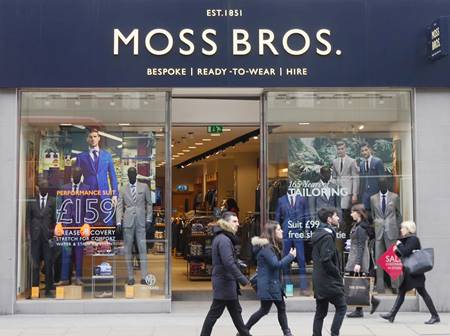
A Moss Bros store on Oxford Street, 2016. (©Edwardx CC-BY-4.0)
Harry understood that it was not simply enough to make clothes. You also needed people to want to come into the shop to buy or hire them. This was the start of a new era of marketing, and Harry made the most of emerging theories about consumer psychology by hiring John Cassels, a young expert in direct mail advertising. Cassels used marketing to cultivate customer loyalty. Firstly, he used mail to follow up with customers, turning one-time visitors into regulars by making them feel as if they were getting an old-fashioned, personalised service even as the firm expanded. Secondly, he produced a series of fun illustrated booklets. The contents of these colourful publications did not directly promote Moss Bros products. They ranged from distracting fictional stories to handy social guides, including The Social Roundabout, which explained key events in the British social calendar and made connections between Moss Bros and the leisure pursuits enjoyed by the British establishment…. The booklets worked because they were entertaining, attractive and useful enough to keep and reread. This meant that the name Moss Bros found its way onto bookshelves across the country, embedding the firm and what it stood for in the national psyche.
Clever marketing helped Moss Bros negotiate a line between the exclusivity expected by its society customers and the accessibility that it needed to offer the wider public in order to expand. After World War II, this growth took multiple directions. A ladies’ hire service was launched in 1947 and in the 1950s the mail-order business expanded into accessories. In the 1960s, the business responded to the nation’s increasingly informal wardrobes by incorporating more sportwear for activities such as skiing.
The legacy of Harry Moss
Much of Moss Bros’ success over the twentieth century can be attributed to Harry Moss, who understood how to tell a compelling story about clothes and the impact they can have. Formal wear in Britain is both aspirational and tied to a strict social hierarchy. Moss Bros helped its customers feel confident that the firm’s clothes allowed them to belong in British society, no matter where they came from. When Hellmut Feisenberger fled to London from Nazi Germany in 1933, he found that the clothes he brought with him marked his difference. He became a Moss Bros customer, using the company’s services to help his integration into British life and his eventual role as chief cataloguer for Sotheby’s auction house.
It was perhaps his belief in the transformative power of clothes that helped Harry Moss seamlessly negotiate his own roles as a successful British businessman and establishment fixture who served the monarchy and his identity as a Jewish man of strong faith who was actively involved with the West London Synagogue and Jewish clubs, including the Cambridge and Bethnal Green Boys’ Club. Certainly, Harry was keen to preserve the place of his Jewish firm formally in the history of London fashion. In 1945, Harry published a letter in The Times newspaper offering help to any institution interested in building up a collection of men’s clothing. Four years later, W. F. Grimes, then director of the London Museum, responded and Harry donated a collection of 25 menswear ensembles dating from the 1880s to the 1930s. They included pieces from Savile Row tailors such as Meyer & Mortimer and Henry Poole as well as a Moss Bros overcoat dating from around 1910, a rare pre-war survival that shows the influence of Savile Row cuts and quality on Moss Bros’ early ready-made tailoring.
This is an edited excerpt from the chapter ‘Moss Bros | Generations of Moss’ in the book Fashion City: How Jewish Londoners shaped global style, by Bethan Bide and Lucie Whitmore, available to buy at the Museum of London online shop.
The book accompanies our major exhibition ‘Fashion City: How Jewish Londoners shaped global style’ at the Museum of London Docklands until 7 July 2024. Book your tickets to the exhibition here, and get a discount on the book when bought alongside your exhibition ticket.
Header image: Moss Bros headquarters in Covent Garden. (©Moss Bros)
Want more such stories? Subscribe to our fashion newsletter to read more stories from our collection, and see upcoming events and exhibitions.








